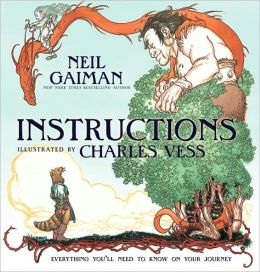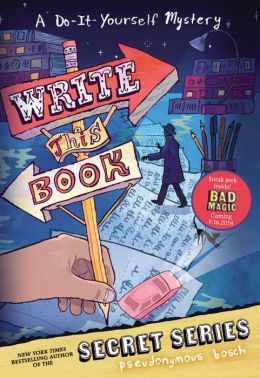As I looked at what the kindergarten teachers were posting and saying, I wondered, "How can I adapt this for my older students?" They are so full of fun, enthusiasm, and questions. They deserve open-ended learning experiences and beautiful experiences just as much as younger students. As some forces are pushing me to make my classroom even more rigorous and demanding, I want to balance things by providing creativity and room for intellectual growth.
 Getting Started: Limited Choice
Getting Started: Limited ChoiceI decided to dedicate about 20 minutes each day to open-ended work. In the first few weeks of school, I spent great care in developing the culture of our centers and what would happen there. It was not without bumps. Many students associated open-ended free time with recess. I had to constantly remind them--"This is a learning time," and ask, "Are you taking advantage of the learning opportunities in this room?"
As you can see from the centers list, I chose a wide range of activities that could happen in many different places in the room. Issues of access and squabbling caused us to make some tweaks to our routines, such as making daily schedules for Marbleworks and the computers.
 Early on, kids started asking to do things that weren't on our list. My natural inclination was to say, "Sure!" However, sometimes I have to go across my natural inclinations. (I am always tending toward chaos.) I said, "For now, please choose something that is on our list." Then, as months passed, I would update the list with their new suggestions.
Early on, kids started asking to do things that weren't on our list. My natural inclination was to say, "Sure!" However, sometimes I have to go across my natural inclinations. (I am always tending toward chaos.) I said, "For now, please choose something that is on our list." Then, as months passed, I would update the list with their new suggestions.Spreading Wings
The centers became a great place to put materials after a unit. For example, after we studied volume, I put a wide range of tools by the sink. Sink play is virtually unheard of at my grade level. (If you are a grade 3-5 teacher and you let kids play in the sink, please send me pictures!) Kids took responsibility for any mess. And kids discovered so much about the different measuring tools--the
 |
| The Erector set was hugely popular in the early weeks of school. |
By mid-October I felt comfortable enough with routines to loosen up in what students could do. The open-ended time became a time for freeform investigations and jobs. One student, seeing that our closet was a wreck each morning, wrote a contract to take care of the closet in return for a coupon (from our class economy) each day. He enlisted the help of another student and gave occasional reports to the class about how it
 |
| A student drawing from a Frolyc iPad activity. |
Another student, seeing the neglected animal cards, created an identification game. From the corner I could hear kids calling--"Dragonfly! Otter!" as they raced each other to identify the animals. Students also work on open-ended, optional activities, such as their Bat Week posters, Frolyc, bird observations, reading, and computer games. Checking in on animal observation cams has also been a favorite activity of late.
The time has also become an opportunity for students to work on their own science investigations. With the onset of cold weather, we've had several ice experiments. It's been fun to hear kids talk to each other about using the measurement tools from early in the year to create more sophisticated experiments.
 |
| The animals that students bring in are great opportunities for open- ended exploration. |
In the weeks to come, I plan to add more opportunities for science experiments. Students have written and conducted their first simple experiments, and now are eager to try more with vinegar, baking soda, food coloring, and the like. Just like every new activity, I expect this to be hugely popular.
 |
| Kids weighed everything on the balance. Erasers, pencils, paper clips, water bottles, and a mix of all of the items together. |
I could easily write this blog post to make it sound as if this
routine in my classroom always works beautifully and is perfectly wonderful in every way. But I can't ignore the bumpy spots and the thorny questions.
One day last week I counted 17 different activities going on over the course of the morning. They were all rich, meaningful activities, and I was fascinated at the range of curriculum areas and topics that they reflected.
But are students switching too often? I have noticed several students engaging in at least four different activities in 20 minutes. I've intervened a few times, but I've also stood and watched, and wondered. Should I tell students to choose one activity and stick to it? Or should I just allow them to enjoy this time of complete choice?
There are also some kids who sit back and opt out of the social aspect of this time. These students love to read and sit, completely absorbed in a book. My short-term attempts to pull them into the social whirl of activity are politely tolerated for a day, and then they go back to reading.
A few students seem to just watch what the other kids do--I'll find them looking over the shoulder of someone playing a game or looking at our class blog. Again, these students politely take my suggestions, but do not engage themselves on their own.
Should I be more insistent about pulling these students in? Or should I wait, hoping that the new activities I'm introducing on Tuesday will do the trick?
For all of my out of class reflections, often my best decisions about open-ended time come about when I am in the moment--when five kids are calling me over to see something, a colleague has stopped by to ask a question, or someone brings in something unexpected and exciting to look at. These are the moments when I know that time for centers and play is worth pursuing for my fourth grade students.
Tweet







